
Ranking the James Bond Books
As a lifelong fan of the James Bond movies, I’d always held a shameful secret: I’d never once picked up an Ian Fleming James Bond novel.
That all changed when the next Bond film, No Time to Die, was delayed from its initial release date of April 2020 to November 2020. Then delayed again… And again. Suddenly, with nothing but time on my hands (there’s only so many times you can binge-watch even Goldfinger), I decided I’d take on a secret mission of my own. Before No Time to Die finally made it into Canadian theatres, I would read all 14 of Ian Fleming’s original James Bond books in order. (And rank them, obviously, lest my geek card be revoked.)
Would Fleming’s writing style hold up 70 years after these books were first published? Could they possibly compare to those classic flicks I’d treasured since childhood? What I discovered in cracking the spines of these books was another side of Bond—vastly different from the films in tone, characterization and plots, but one that added another layer of depth to those movies. Some of the books resembled their film adaptations very closely (Dr. No, On Her Majesty’s Secret Service), while others only shared a title in common (The Spy Who Loved Me, Octopussy), but they all inspired me to see those familiar films with fresh eyes.
The biggest surprise, however, was how easy it is to get lost in Fleming’s fictional world. Set in a time when most people in Britain were still living on rations and international travel was exclusively for the super-rich, Fleming’s novels double as travelogues, with Bond as our guide to exotic locales from Jamaica to Japan. These are destinations his readers in the ’50s could only dream of visiting, but he describes them in such vivid detail, we experience them as Bond experiences them. It helps that in addition to being a secret agent, Bond is a true bon vivant, and we’re treated to the best of everything, from decadent meals to luxurious hotels.
There’s also a dark side to the series being a product of its time. Fleming frequently channels his own bigotry through the character of Bond, who is, as Judi Dench’s M so succinctly puts it in the 1995 film GoldenEye, “a sexist, misogynist dinosaur.” Whenever our “hero” launches into a racist, sexist or homophobic inner monologue, it wrenches the reader out of that elaborately-crafted fantasy world, faced with the ugly reality of the prejudices that were rampant at the time. This, more than anything else, has dated the novels, and directly affected my enjoyment of certain titles.
That said, how do the various novels stack up? Let’s take a look at all 14 James Bond books in the original series, ranked.
Psst—if you’re planning your own literary Bond-athon, I’d recommend reading them in chronological order:
- Casino Royale (1953)
- Live and Let Die (1954)
- Moonraker (1955)
- Diamonds Are Forever (1956)
- From Russia, With Love (1957)
- Dr. No (1958)
- Goldfinger (1959)
- For Your Eyes Only (1960)
- Thunderball (1961)
- The Spy Who Loved Me (1962)
- On Her Majesty’s Secret Service (1963)
- You Only Live Twice (1964)
- The Man With the Golden Gun (1965)
- Octopussy and The Living Daylights (1966)
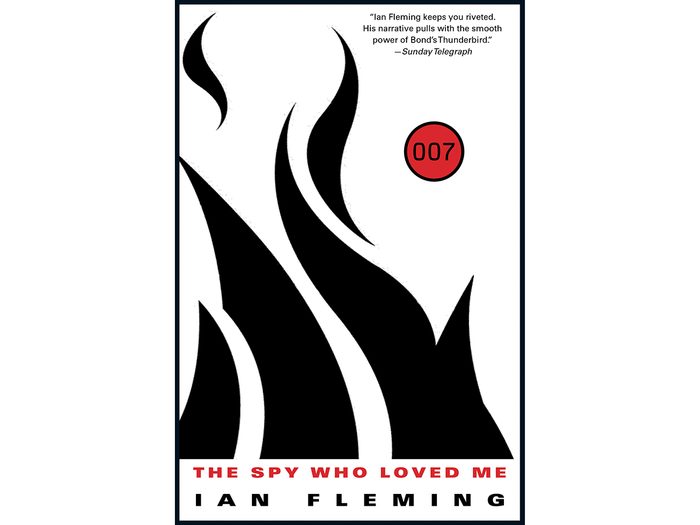
14. The Spy Who Loved Me
Although it’s easily the weakest of the James Bond books, The Spy Who Loved Me is at least a noble failure. As an attempt to tell a James Bond story from the perspective of an outsider—a “Bond girl,” no less—it’s refreshing to see Fleming adopt a first-person approach. Unfortunately, our narrator, Vivienne Michel, isn’t terribly interesting, a fact made painfully obvious in the first third of the novel which establishes her rambling and pointless backstory. Things only start to pick up when 007 enters the scene, coming to Viv’s rescue when two particularly nasty guests arrive at the remote motel she’s overseeing in the Adirondacks. There’s very little to hold a reader’s interest, but as the shortest book in the series, at least it’s over quickly.
4/10
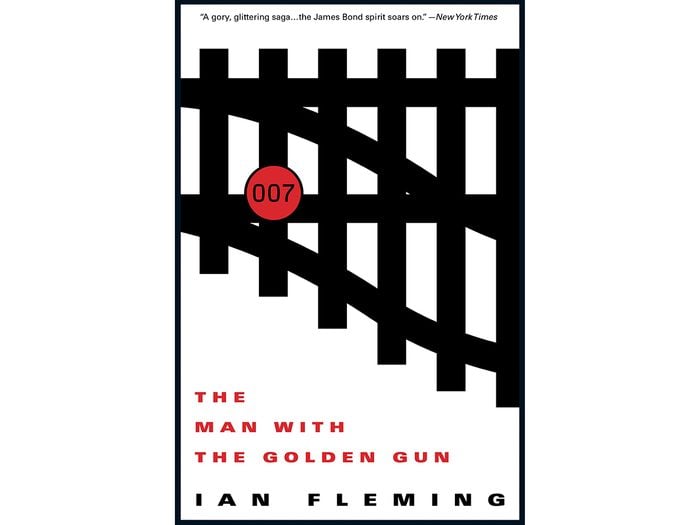
13. The Man With the Golden Gun
There’s no James Bond book that promises so much, but delivers so little. I mean, how could a story that begins with a brainwashed Bond attempting to assassinate M fall so flat? The Man With the Golden Gun squanders that spectacular premise by treating it as a mere prologue to its central plot concerning a run-of-the-mill gangsters’ convention in the Caribbean. There’s the odd set piece that shows signs of life—including a surreal sequence in which Mary Goodnight seems to be tied to a railway track in the path of a speeding locomotive—but for the most part, this is Fleming going through the motions. Even the Caribbean setting that he normally excels at has none of the richness that made our previous visits to this locale leap off the page.
5/10
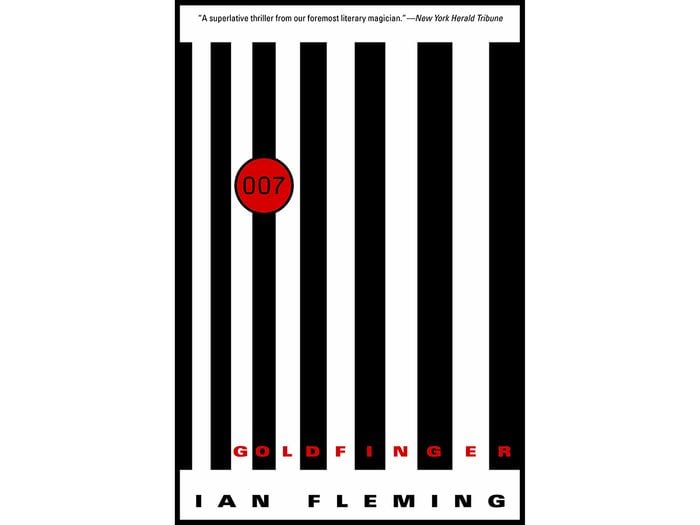
12. Goldfinger
It doesn’t happen often, but sometimes a film is better than the book it’s based on. In the case of Goldfinger, Guy Hamilton’s 1964 motion picture improves on Ian Fleming’s original novel in just about every respect. Granted, the adaptation is a fairly faithful one and retains most of Fleming’s key ingredients, but it nixes the appalling racism and homophobia, speeds up the pace, and takes on a more breathtaking scope than the source material. Take, for instance, the titular villain’s master plan, “Operation Grand Slam.” Fans of the film will recall it as a truly awe-inspiring scheme to irradiate the U.S. gold reserve at Fort Knox. In the novel, however, Goldfinger is content simply to steal it (a heist that doesn’t even make sense logistically). Holding the dubious distinction of the highest page count in the series, the action in Fleming’s Goldfinger regularly slows to a crawl. There’s a golf game between Bond and Goldfinger early on that’s drawn out for an entire chapter; every play related in excruciating detail. Normally, this sort of thing—two adversaries quietly sizing each other up over a deceptively well-mannered game, whether it be golf, baccarat or bridge—is where Fleming really shines. Here, it’s just tedious.
6/10
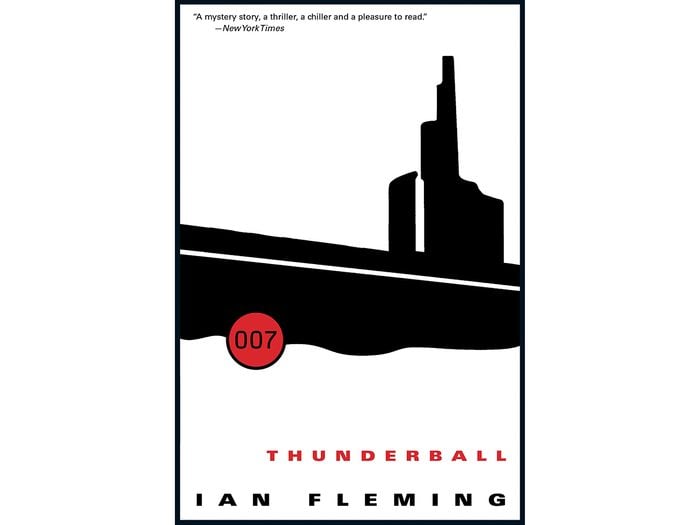
11. Thunderball
Auric Goldfinger could take a few pages from Ernst Stavro Blofeld as far as evil plots are concerned. Thunderball presents a master class in villainy with SPECTRE’s scheme for world domination: holding the West to ransom with two hijacked atomic bombs. So synonymous with Bond it’s virtually become cliché, this classic premise sets the table for what should be one of 007’s greatest adventures. What lets Thunderball down, however, is again the issue of pacing. Instead of having Bond hot on the trail of the missing nukes from the get-go, Fleming delays our hero’s involvement with an interminable sequence in a dreary health clinic. Even worse, the clinic just so happens to be hosting the SPECTRE agent in charge of the whole hijack operation… A remarkable coincidence, indeed. Thankfully, things pick up once the action shifts to Nassau, and Bond’s race against time really begins.
6/10
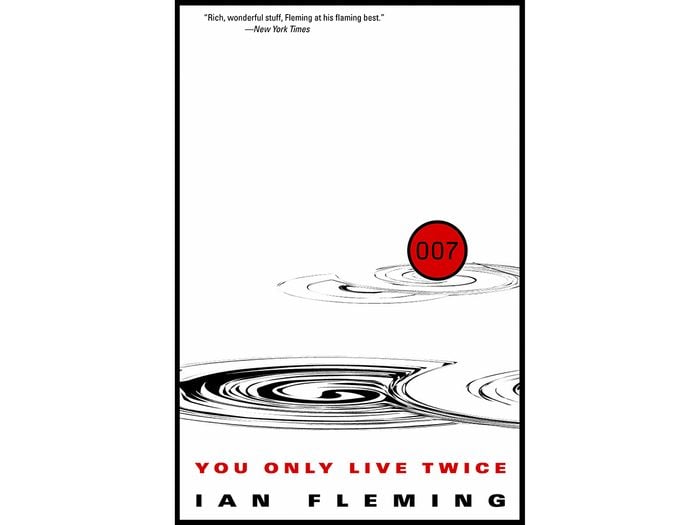
10. You Only Live Twice
Someone is operating a “Garden of Death” in the Japanese countryside, luring victims within its walls to die in a variety of gruesome ways—think venomous plants, piranhas and lava enemas (yes, really). Bond suspects Blofeld’s behind the whole thing, and it’s not long before he’s infiltrated the grounds for one last face-off with his arch enemy.
As bizarre as that summary might sound, the experience of reading You Only Live Twice is somehow even weirder. At times, it almost feels like a fever dream; as though 007 and his nemesis have been transplanted into a different series altogether, divorced from the cozy Bond trappings we’ve come to expect. A major factor in that disconnect is the setting: Fleming is obviously fascinated with Japan, and it shines through in his highly-detailed depiction of Japanese culture in the early ’60s. From dining etiquette at a Tokyo restaurant to fishing methods in a remote seaside village, You Only Live Twice is a rich travelogue, and far more dynamic than the European and Caribbean settings of this novel’s immediate predecessors.
If you’re prepared to approach You Only Live Twice as a unique departure from Fleming’s Bond formula, you’ll enjoy it enormously. If, however, you’re expecting a satisfying climax to the Blofeld trilogy, well…
6/10
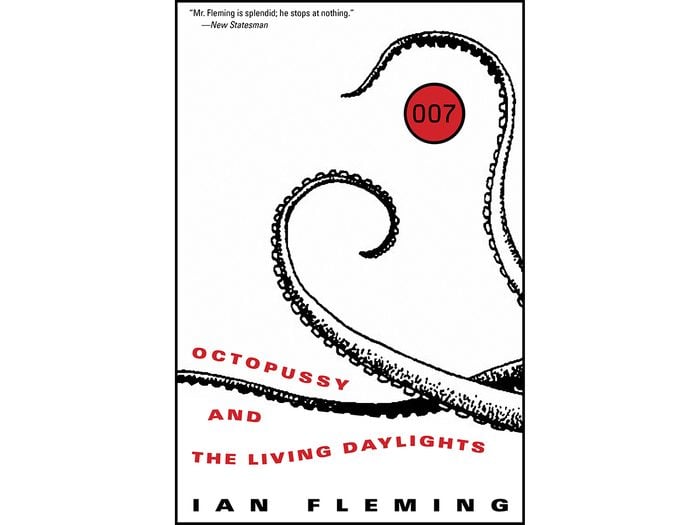
9. Octopussy and The Living Daylights
Published two years after Fleming’s 1964 death, Octopussy and The Living Daylights would be the final bow from the series’ creator. In spite of its double-barrelled title, it’s actually a collection of four unconnected short stories that showcase very different sides of Bond as a character—and the versatility of Fleming as an author. You get a haunting morality tale (“Octopussy”), a lively espionage caper (“The Property of a Lady”), a nail-biting sniper thriller (“The Living Daylights”), and a quirky character piece (“007 in New York”). The variety makes for a refreshing diversion, and shows just how “stretchy” the world of Bond can be—one of the reasons the franchise is as popular as ever, nearly 70 years on.
6/10
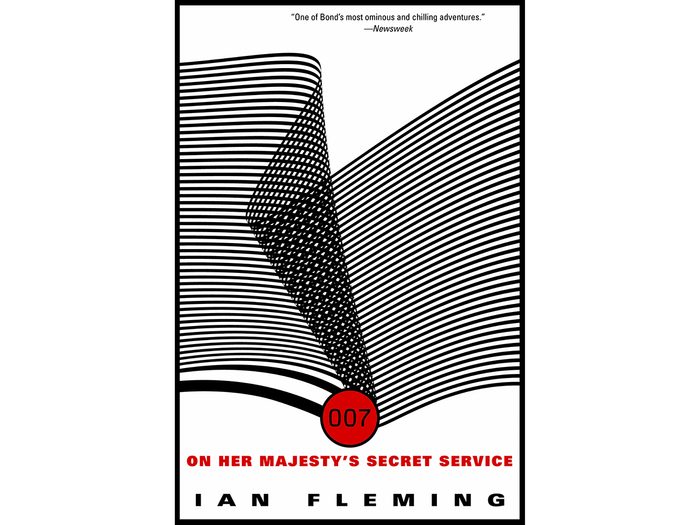
8. On Her Majesty’s Secret Service
James Bond decides to quit the Secret Service! James Bond finally tracks Blofeld to his lair! James Bond gets married!
In terms of the development of 007 as a character, On Her Majesty’s Secret Service enjoys a special place in the series. And even as a standalone spy thriller, the first two-thirds are utterly gripping, with Bond working undercover as a foppish heraldry expert to infiltrate Blofeld’s mountaintop compound. Fleming masterfully ramps up the tension as Bond’s cover unravels, and he finds himself at the mercy of a truly nightmarish double-act: Ernst Stavro Blofeld at the peak of his powers, and the wicked Irma Bunt at his side. Unfortunately, as soon as Bond escapes Blofeld’s clutches and returns to London with what he’s learned, the story runs out of steam. Aside from the perfunctory raid on the villain’s lair, the final act is very talky—even the revelation of Blofeld’s diabolical scheme to brainwash a bevy of beautiful women as carriers of biological warfare doesn’t pack the wallop it should.
And maybe it’s over-familiarity with the film version (one of my all-time favourites in the series), but the much-vaunted wedding feels like an afterthought. Although On Her Majesty’s Secret Service pushes the envelope in many ways, and brings fascinating depth to Bond as a character, I found myself hoping for more of a gut-punch from those final few pages.
6/10
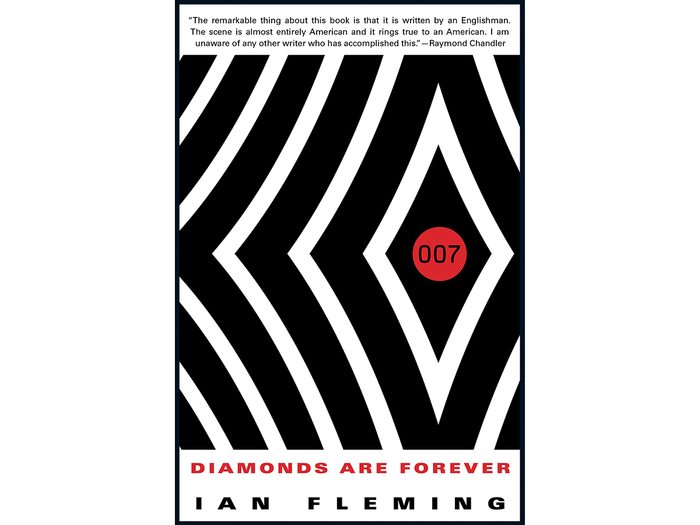
7. Diamonds Are Forever
Although it’s not well-regarded by most fans of the James Bond books, I have a real soft spot for Diamonds Are Forever. Admittedly, it’s one of 007’s more forgettable missions—the Spangled Mob are generic gangsters, and their diamond smuggling racket is too straightforward. What elevates the story for me is Fleming’s incredible gift for world-building. I found myself aching for the glamour of a transatlantic flight in the mid-1950s, complete with gourmet meals and yes, even the haze of cigarette smoke. A young Las Vegas also leaps off the page, and even back then, its artifice and seedy underbelly are shown to seep through the glittering veneer. It all builds to a grueling final showdown in a recreation Wild West town, and an unbearably tense railroad chase. Are these Diamonds flawless? Heck no. But they sure are fun.
7/10
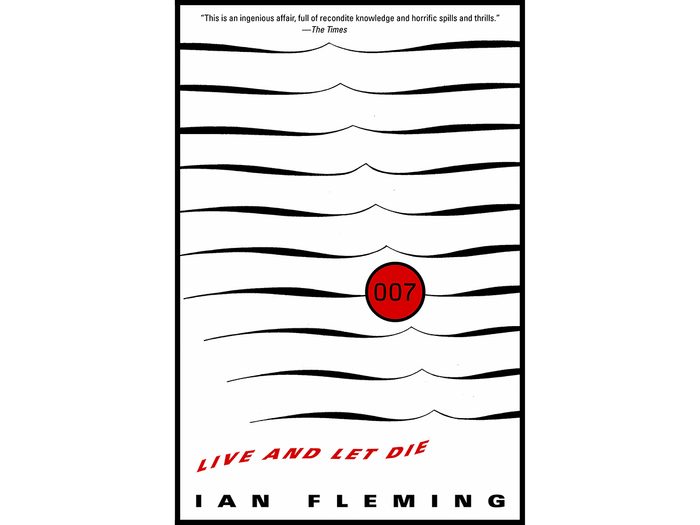
6. Live and Let Die
There’s a sequence in Live and Let Die that’s forever seared in my mind. Bond, searching for missing CIA pal Felix Leiter, returns to his hotel room to find a body lying in bed, wrapped in blood-soaked bandages. Attached, the hand-written note: “He disagreed with something that ate him.” It’s just one in a string of memorable set pieces that make Live and Let Die the literary equivalent of a theme park ride. Just as you’re getting your breath back, Fleming delivers the next adrenaline-charged sequence, rapid-fire. It feels like everything in this novel is out to get Bond, and it’s related so vividly, I finished it feeling as though I’d watched a film.
That’s a testament to Fleming’s gift for painting pictures with words—a talent he uses to greatest effect when the action shifts to Jamaica. He wrote Live and Let Die from his Jamaican estate, Goldeneye, and he lavishes the landscape with some of the most gorgeous prose he ever put to print.
On the opposite end of the spectrum, we have Live and Let Die‘s racist overtones. Fleming’s attempts at conveying a Harlem dialect on page are cringe-worthy, and a blight on an otherwise superb story.
7/10
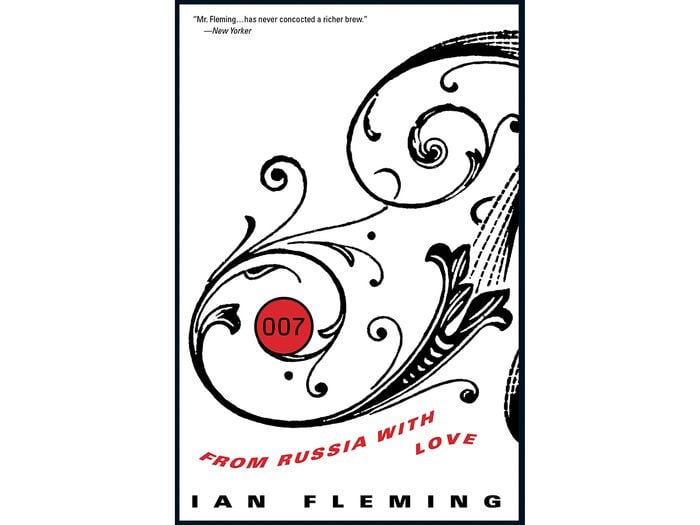
5. From Russia, With Love
Smarting from the defeat of yet another of their agents, SMERSH decides to eliminate Bond once and for all. But how to do it in a way that destroys him and the Secret Service completely?
In a delightful twist, the first third of From Russia, With Love deals not with M giving Bond his next assignment, but with the villains at SMERSH hatching their evil scheme. And what villains! FRWL treats us to a trifecta of top-notch baddies: Kronsteen (the brains), Red Grant (the brawn), and Rosa Klebb, whose penchant for dagger-tipped shoes makes for an alarmingly open-ended finale. (Rumour has it, Fleming considered ending the entire series right there, but when JFK himself lists your novel as one of his top 10 favourites, you simply have to come back for more!)
Again, the settings very nearly steal the spotlight. What Live and Let Die did for Jamaica, From Russia, With Love does for Turkey—and in particular, the Orient Express. If, like me, the book left you yearning to make the Istanbul-to-Paris run like Bond and Romanova, let me save you some Googling: The going rate for a cabin these days is a cool £31,000 (or $54,000 Canadian). Yet another reason to fantasize about travel in the ’50s…
8/10
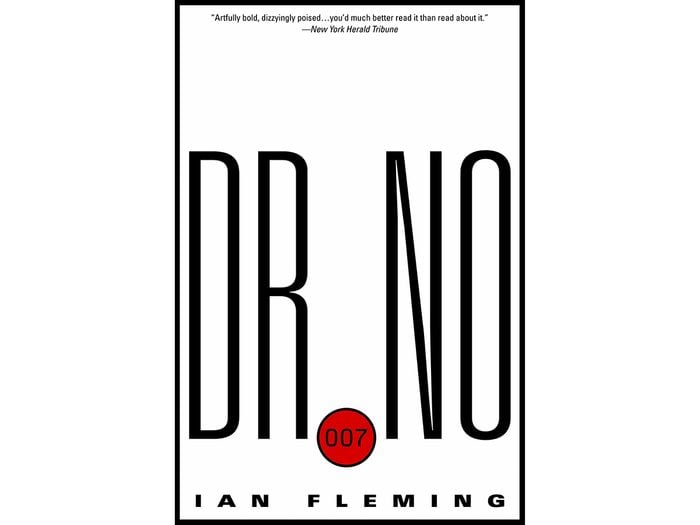
4. Dr. No
With a writer as versatile as Fleming at the helm, there really is a James Bond book for every mood you’re in. If you’ve got a taste for something gritty and grounded, you can crack open Live and Let Die. If, on the other hand, you want to lose yourself in a truly over-the-top adventure, you’ve got Dr. No.
This larger-than-life novel obviously had a massive influence on the tone Harry Saltzman and Albert R. Broccoli would adopt in their James Bond films. Granted, Bond isn’t delivering terrible puns after dispatching his enemies and there aren’t any gadgets to speak of, but there’s an element of fantasy in Dr. No that runs through many of the movies, peaking in the Roger Moore era. And if that’s your cup of tea—as it certainly is mine—Dr. No is about as good as it gets.
It starts with a bang (literally), as a secret service agent we last saw in Live and Let Die is gunned down. Sent to Jamaica to investigate, Bond follows a series of leads to the sinister Crab Key, aided by Quarrel (another nice continuity nod to LALD), and Honeychile Rider—the most cliché Bond girl of them all. Their trek through the nightmare landscape of Crab Key makes for many of Dr. No‘s most thrilling set pieces, but the best is saved for the introduction of the villain himself.
Blofeld may be the archetypal baddie in the Bond universe, but Dr. No is by far the most monstrous. With steel pincers for hands and a heart on the wrong side of his body (handy when you need to dodge an assassin’s bullet), he’s unlike anything we’ve encountered in the series: a man who, like all the best comic book villains, positively radiates evil. The bizarre obstacle course he’s prepared for Bond is pure pulp, culminating in 007’s one-on-one battle against a giant squid. Although it sounds outrageous, somehow in the weird and wonderful world Fleming has crafted in Dr. No, it’s just… awesome.
8/10
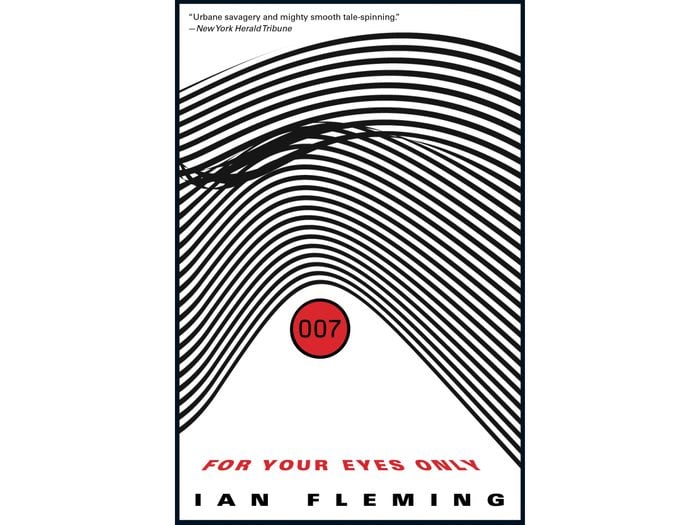
3. For Your Eyes Only
Like Octopussy and The Living Daylights published six years afterward, For Your Eyes Only is a collection of short stories that showcase the endless creative potential of the Bond franchise. If anything, the five short stories here are even more experimental, and represent some of Fleming’s most literate contributions to the range.
Take “Quantum of Solace,” for instance—a story within a story, in which a dinner party host regales Bond with the tale of a tumultuous marriage. It should be snooze-worthy (particularly in the context of the spy thriller genre), but Fleming’s execution is utterly flawless, somehow making the mundane into a compulsive page-turner, and a worthy addition to the Bond canon.
Although all five short stories are more satisfying than you might expect given their page count, it’s the titular “For Your Eyes Only” that’s the real standout. There’s some wonderful characterization here, with M’s very personal mission—he’s asking Bond to avenge the brutal murder of his friends—showing a more human side to their relationship, and a mutual respect and warmth between the two. It’s not just a character study, though—the action that follows is totally exhilarating, culminating in a real punch-the-air moment when Bond’s bullets, arrows and fists find their target. Revenge never felt so good.
9/10
Check out the best thrillers on Netflix right now.
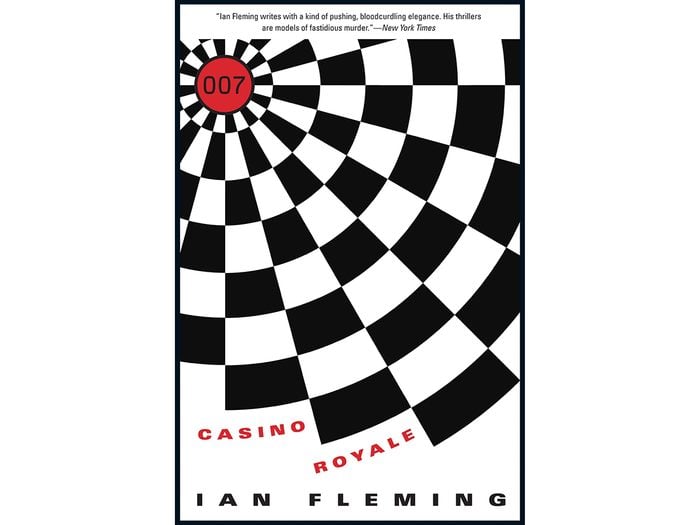
2. Casino Royale
“The scent and smoke and sweat of a casino are nauseating at three in the morning.”
…And with that evocative opening line, I was hooked. Even if Casino Royale didn’t spawn a series of best-selling novels and blockbuster films, the first James Bond book would stand alone as a masterwork of 1950s literature. From the Cold War intrigue to the characterization of Bond, Fleming nails everything from the very first page, building a world so rich in sights, tastes, smells and sounds that reading becomes a truly immersive experience.
Our introduction to Bond sees him on a mission to bankrupt the evil Le Chiffre at the baccarat tables; a seemingly straightforward assignment that’s complicated by the involvement of Le Chiffre’s bosses at SMERSH, and Bond’s entanglement with the beautiful Vesper Lynd. Their romance brings out a vulnerable side of 007 that we’ll never really see again, even when he eventually does tie the knot in On Her Majesty’s Secret Service. That this love story ends in tragedy should come as no surprise. What’s shocking is how effectively Fleming toys with the reader, dropping subtle hints that Lynd isn’t quite what she seems and Bond’s dreams for a “happily-ever-after” are doomed. Considering how cold the much-lauded finale of OHMSS left me, the conclusion of Casino Royale is absolutely devastating.
10/10
Find out what the James Bond books meant to one voracious young reader in the ’60s.
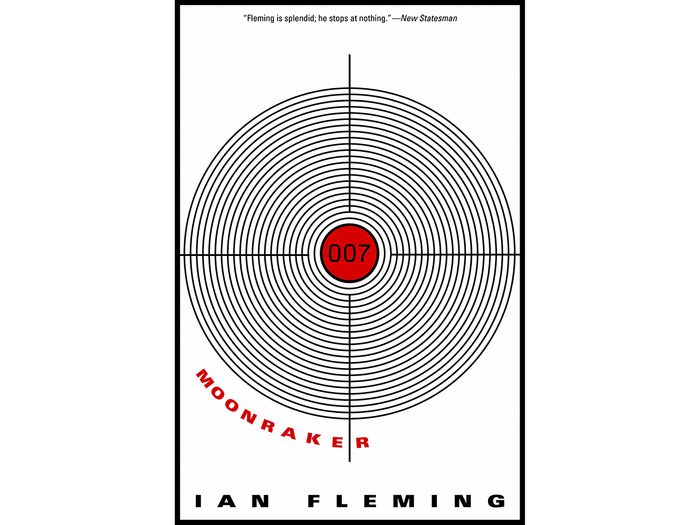
1. Moonraker
Who is Hugo Drax? Although the millionaire industrialist is regarded as a national hero, even he doesn’t seem to know—claiming a bout of amnesia has wiped his memories of anything that happened before the War. The nature of his identity is a compelling mystery that drives the first half of this all-time classic, which sees Bond slip comfortably into the role of detective, first at a gentlemen’s club where M suspects Drax of cheating at cards, and later at Drax’s own compound, where he’s developing Britain’s ultimate Cold War weapon: the Moonraker rocket.
The lengthy build-up of that mystery more than pays off, with a reveal that’s a genuine jaw-dropper—a testament to the magic of Moonraker. Smart, sinister and totally unpredictable, it’s the James Bond book I could re-read endlessly, and find new elements to enjoy every time.
The fact that Fleming can take a game of bridge and make it as thrilling as an action-packed shoot-out speaks volumes to the calibre of the writing on display here. From the Dover Cliffs landslide to the rocket launch countdown (the consummate “how the heck is Bond going to get out of this one?” scenario), Moonraker delivers many of the series’ definitive set pieces. My favourite, if pressed, is a moment of dawning terror when Bond’s ally, Gala Brand, discovers the coordinates of Drax’s rocket aren’t set for the test site over the North Sea, but the heart of London itself:
“Gala made a last effort to understand.
Through this ceiling, through this chair, into the ground, The thin needle of the rocket. Dropping fast as light out of a clear sky. The crowds in the streets. The Palace. The nursemaids in the park. The birds in the trees. The great bloom of flame a mile wide. And then the mushroom cloud. And nothing left. Nothing. Nothing, Nothing.
‘No. Oh, no!‘
But the scream was only in her mind and Gala, her body a twisted black potato crisp amongst a million others, had already fainted.”
Fleming at his most chilling, thrilling best.
10/10
Next, check out every James Bond movie—ranked.